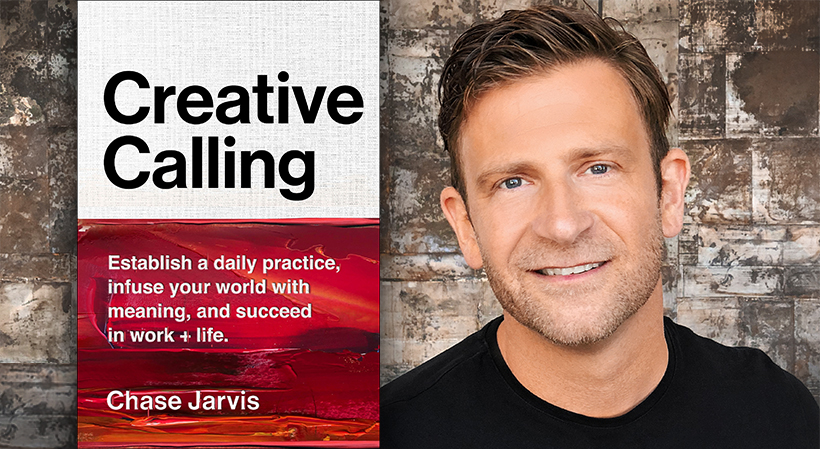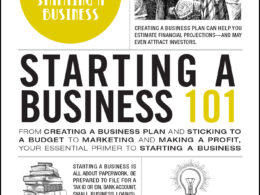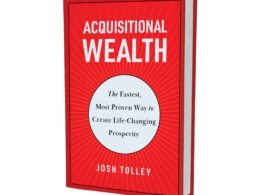The following is excerpted from the book “Creative Calling: Establish a Daily Practice, Infuse Your World with Meaning, and Succeed in Work + Life” by Chase Jarvis. Copyright © 2019 by Chase Jarvis. To be published on September 24, 2019 by Harper Business, an imprint of HarperCollins Publishers. Reprinted by permission.
I’ve had the opportunity to meet and work with a number of the world’s greatest venture capitalists. Good VCs understand risk. Most startups will fail, but the ones that succeed can more than make up for all the rest. That’s how the game works. Anyone with some money can become a VC. Remaining a VC? That means weighing the risks properly so you can keep your seat at the table. It’s just like Vegas: once your pot is empty, you have to go home.
Creators can learn a lot from VCs. We are the capital and the venture. Again and again, we slide our chips—time, attention and reputation—into the center of the table and wager them. To stay in the game as creators, we want to make lots of bets when the stakes are low. But often we measure the stakes all wrong, valuing our dignity far too much and our integrity far too little. A creative failure doesn’t cost you much beyond a little embarrassment; selling out for a quick buck can cost you everything.
Special offer: Get the essentials to deliver great customer support, fast — for just $25 a month
Seth Godin and I once talked on CreativeLive about his childhood experience of going bowling with friends. His mom had given him enough money to play a certain number of games. Each game offered a certain number of rolls. That meant each and every one mattered—you didn’t mess around. You kept it simple and rolled as straight as you could. No trick shots, no play, no experiments, no funny business. He contrasted this with the “unlimited bowling” offered by the era we’re in today. On the internet, for example, you’re in an arena where you can try things, build things and share things as many times as you like and take endless creative risks without remorse. I love this concept—it reminds me of the freedom offered by digital cameras over film. I can take as many risks as I want with my camera. Unlimited exposures.
There is no reason to hide. Be bold. Take smart risks. Embrace failure like an old friend. People respect a wrong move made with confidence far more than a correct one made without conviction. If you’re writing a blog post, improvising a scene, or putting together a new and unusual service offering for your business, the stakes may feel high, but they aren’t. Go for it. If you fail, learn from your mistakes and move on.
But what about when the stakes are high? Does that mean you shouldn’t try? People get stuck in dualistic thinking here. It’s either risk it all or play it safe. Successful people got where they are by taking huge swings, right? So if you’re not willing to take out a second mortgage on the house to fund your startup, you might as well give up. That’s a false dichotomy! The most successful performers weigh the merits of every risk before taking it and they protect their downside, often invisibly.
If you’re playing roulette in Las Vegas, your goal—if you’re smart—is to have fun for as long as you can. You know that the house always wins. Once you’ve decided how much you’re willing to bet, the trick is to maximize your time at the table. You might feel like a big shot putting everything on red, but that gives you a 50 percent chance of heading back to your room to watch TV all night. Make an array of bets and you get to play longer. Serial entrepreneurs have the same mentality. The people on the covers of magazines are almost always more risk conscious and risk averse than you realize. You might get lucky once or twice with a big bet, but your luck will always run out. If you want to stay at the table, you have to learn to assess risks and anticipate problems.
Related: 4 Ways Franchise Ownership Minimizes Business Risk
To get Virgin Airlines off the ground, Sir Richard Branson made a deal to buy a used 747 from Boeing. When it comes to risky moves, starting an airline is up there. So is investing a hundred or so million dollars in any new business venture. But Branson has been successful over the long haul because he knows how to hedge his bets. When he bought the first plane, he pre-negotiated a deal to sell it back to the manufacturer and recoup most of the money if the airline didn’t take off. That part of the story is usually glossed over by the magazines. Think big and be prepared to mitigate any losses. Remember: if you bet everything on red and lose, you’re going back to your room.
Be honest and clear about the risks you’re taking. Figure out what things cost and how long things will take before you move ahead or call it quits.
When you consider a new project, take out your notebook and answer the following questions:
- What is the goal of this project?
- Why am I doing it?
- What do I hope to get out of it?
- What is the worst thing that might happen if I fail?
- What steps can I take to reduce risk and mitigate failure?
- Is it worth it?
Every big creative project calls for a risk assessment because most of us risk too little to truly stand out. It’s only once you sit down and write out all the worst-case scenarios that you realize that the shadowy fears circling around your head aren’t really all that concrete or overwhelming. They’re just manageable obstacles.
Yes, if you take some money out of your savings to buy gear for your streaming video channel, you might get into financial trouble down the road if, for example, you and your spouse lose your jobs at the same time. On the other hand, the channel is a major goal for you that lines up with your creative interests and aspirations. What are some things you can do to cut costs? Consider bartering, sharing gear with another videographer, renting more expensive gear instead of buying it, and so on. What are some things you can do to mitigate the risk? If the channel doesn’t take off, you can always try a different channel concept. You can offer your videography skills and gear to local companies as a side hustle. You can sell the gear on eBay to recoup some of your investment. And so on. Once you’ve labeled your risks and your plans to deal with them, your outlook will change. What felt impossible will feel doable, exciting, filled with promise.
Today, time is a more common limiter to our creative ideas than money is. Thanks to technology, we have movie cameras in our pockets and recording studios in our laptops. We can publish books with the click of a button and start profitable, robust online businesses with shockingly inexpensive digital tools. Best of all, we can learn how to do all of it for free. It just takes time, and lots of it. How much time can you afford to invest in making something that matters to you?
Time is precious. Never risk it blindly. Do a risk assessment there, as well.
Sign Up: Receive the StartupNation newsletter!
Let’s say you want to write a book but between work and family obligations, you never have time to do it during the day. One risky choice would be writing at the office while pretending you’re working and hoping you don’t get caught. The risk there is your livelihood—it’s substantial.
As an alternative, why not get up at 4 a.m.? Not forever, that’s an ungodly hour, but just until you’ve achieved your creative goal. If you get up early to write every morning for two years and publish a best-selling book, that’s a clear win. You can now afford to quit your day job and write full-time. If your book bombs, what’s the downside? You’ll have given up a little sleep and a little time on the couch at night without sacrificing important family time or your day job. You’ll have proven to yourself that you’re able to set a creative goal and meet it, which is absolutely invaluable. You’ll have become a better writer. Creativity is about reps, about building your creative fitness. You’ve worked your conditioning to peak levels. Now you can continue getting up early if you enjoy it or try something else for your next bet.
“Creative Calling: Establish a Daily Practice, Infuse Your World with Meaning, and Succeed in Work + Life” is available now and can be purchased via StartupNation.com.






